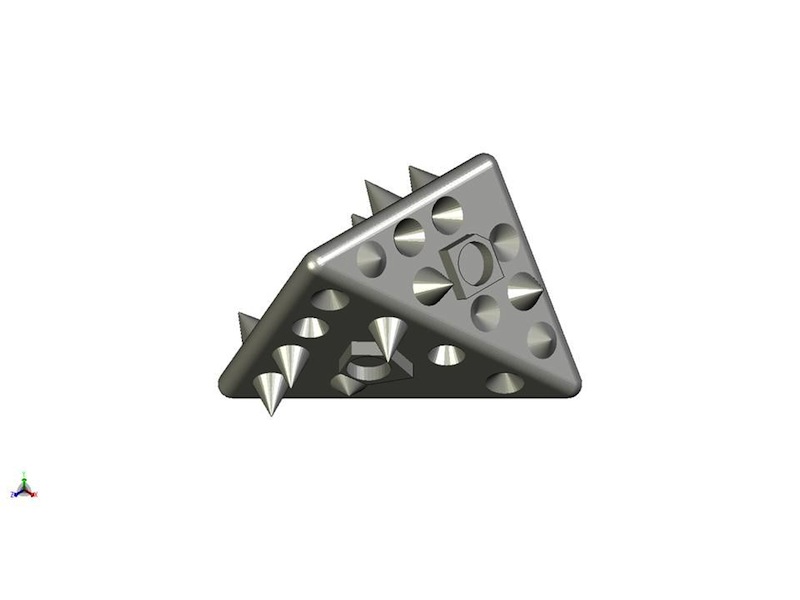Shake, Rattle and Build: Colliding Bricks Self-Assemble Into Objects

If you want to make objects that build themselves, just shake, rattle and roll.
A team of researchers at Israel's Bar-Ilan University built a cylinder from half-inch (about 1.3 centimeters), pyramid-shaped "bricks" of plastic, each with a set of small depressions and studs on its sides and a magnet under the surface. The scientists shook the bricks in a spinning chamber, and for the first time, showed that artificial building blocks can put themselves together just by banging around at random.
In nature, many molecules can self-assemble from individual parts. With DNA, for instance, enzymes split the strands and then rejoin them to others to form full double helixes, duplicating the molecule. Engineers and scientists have also created microscopic "origami" that can fold itself into tiny structures. But the new study suggests that these same principles can be applied to objects in the human-scale world. [Top 10 Inventions that Changed the World]
"Our approach was inspired by perhaps the most intriguing example of molecular self-assembly of complex objects in 2-D and 3-D: DNA origami," said Adar Hacohen, a Ph.D. student and lead author of the study, which was conducted in the lab of Ido Bachelet, an assistant professor at the Institute for Nanotechnology and Advanced Materials at Bar-Ilan University.
In their experiment, Hacohen and her team put the bricks in a container and spun them at rotation frequencies between 200 and 350 revolutions per minute. The bricks shook and rattled inside the chamber, colliding with one another, but as they did so, the magnets made some pieces stick together.
The ones with complementary shapes (i.e., the studs and depressions matched up) would remain attached because they fit in a way that prevented sliding. The magnets also helped to orient the bricks — the negative sides would repel each other, while positive-negative orientations would stick, the researchers said. Another factor was the bricks weren't all exactly the same; the four-sided pyramid shapes were just a little different, so they only made structures when fit together a certain way.
Hacohen and her colleagues attempted spinning groups of two bricks, then three and finally 36 bricks. The researchers eventually created a cylinder using 18 bricks. After a couple of hours, the cylinder took shape, measuring a bit more than 1 inch (2.5 cm) across and about 0.6 inches (1.5 cm) high.
Sign up for the Live Science daily newsletter now
Get the world’s most fascinating discoveries delivered straight to your inbox.
The researchers discovered that an important factor in how the bricks interact is the speed at which the spinning chamber is moving, Hacohen said. If it spins too fast, the bricks just bounce around inside and don't attach themselves to each other. On the other hand, if the chamber spins too slowly, the bricks won't rattle around enough to find their matching partners.
To create other kinds of self-assembling objects, scientists will need to conduct more experiments with other adhesive materials, besides magnets, the researchers said. And while this study used four-sided pyramidal, bricks, the experiment could also work with six-sided, cubelike shapes, Hacohen said.
"Human technology still relies almost entirely on assembly lines to build complex things," Hacohen said. "Assembly lines require immense amounts of information, either in the form of trained personnel or in the form of automatic assembly machines, which in turn are also built on assembly lines, which are by themselves packed with information almost ad infinitum."
By contrast, objects that can self-assemble don't require any of that, she added. Instead, parts could just be placed together and then tossed around. "The successful synthesis and widespread implementation of self-assembly at the macroscale would arguably revolutionize technology as we know it," Hacohen said.
The detailed findings of the study were published today (July 30) in the journal Scientific Reports.
Follow Live Science on Twitter @livescience. We're also on Facebook & Google+. Original article on Live Science.










